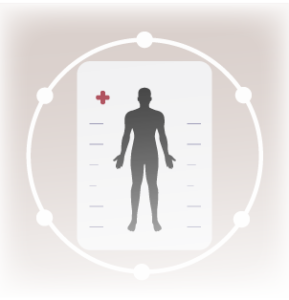Top tips:
- Muscle cramps are common in patients with cirrhosis and can have a significant impact on quality of life (QoL)
- The underlying cause of muscle cramps is poorly understood. Potential risk factors include ascites, lower mean arterial pressure, and altered energy metabolism
- Identify if there are any modifiable factors that can be treated.
- If symptoms are affecting quality of life and function, a trial of pharmacological therapy is reasonable. At this time, pharmacological management recommendations are based on small trials and expert opinion

Check out the bottom of the page for a short video from Dr. Patel!

There are many non-cirrhosis and cirrhosis causes of muscle cramps.
If non-cirrhosis causes are suspected, consider specialist referral as appropriate.
Characteristics of cirrhosis related muscle cramps:
chronic, involuntary, brief, sudden, intense, worse at night.
- Restless legs syndrome (irresistible urge to move or shake the legs)
- Periodic limb movements,
- Dystonia,
- Neurologic disorders, peripheral neuropathy (numbness, tingling),
- Myalgias, myositis
- Peripheral vascular disease/claudication, ischemia (deep aching pain, weakness, elevated serum CK), venous insufficiency
- Motor neuron disorders (abnormal EMG)
- Anemia
- Raynaud’s syndrome
- Opioid withdrawal
- Electrolyte abnormalities: Check potassium, sodium, calcium, magnesium, HCO3, TSH levels, and replete if low.
- Acid-base disturbances
- Worsening liver or renal function
Consider non-pharmacological management in all patients where symptoms significantly impact a patient’s quality of life and function.
- Exercise therapy
- Passive stretching
- Deep tissue massage
Caution: Recommendations are based on small trials and expert opinion
| Medication: | Recommended Dose | Additional information |
|---|---|---|
| Branched chain amino acids | 4 grams PO TID |
|
| Baclofen | 10mg PO daily Increase by 10 mg PO weekly until at 30 mg PO daily |
|
| Taurine | 3 grams PO daily |
|
| IV Albumin therapy | IV 100cc of 25% q weekly |
|
| Vitamin E |
|
|
| NOTE: Quinine sulfate (200-300 mg qhs) is not routinely available or recommended. It has been associated with arrhythmias and thrombocytopenia. Tonic water, although often suggested by clinicians only has 83 mg of quinine per liter. | ||
- As the patient’s condition deteriorates, muscle cramping may worsen and not be amenable to the above therapies.
- If muscle cramps are causing significant pain, pain medication may be required (LINK to PAIN CCAB).
- Discuss with the patient and family that pharmacological therapy may increase drowsiness
- Consider Palliative Care consultation for refractory symptoms.
This section was adapted from content using the following evidence based resources in combination with expert consensus. The presented information is not intended to replace the independent medical or professional judgment of physicians or other health care providers in the context of individual clinical circumstances to determine a patient’s care.
Authors (Alphabetical): Amanda Brisebois, Sarah Burton-Macleod, Ingrid DeKock , Martin Labrie, Noush Mirhosseini, Mino Mitri, Arpan Patel, Kinjal Patel, Aynharan Sinnarajah, Puneeta Tandon
Thank you to pharmacists Omer Ghutmy and Meghan Mior for their help with reviewing these pages.
Helpful Links:
- Goals of care: https://www.albertahealthservices.ca/frm-103547.pdf
- Exercise Therapy: http://cirrhosiscare.ca/healthy-living-provider/exercise-therapy-hcp/
- Pain Control: http://cirrhosiscare.ca/symptom-management-provider/pain-hcp/
References:
- Abd-Elsalam Sherief et al. United European Gastroenterology Journal 2018;6(3) 422-427.
- Abd-Elsalam Sherief et al. European Journal of Gastroenterology and Hepatology 2018; 31:499-502.
- Abd-Elsalam S, Arafa M, Elkadeem M, Elfert A, Soliman S, Elkhalawany W, Badawi R. Randomized-controlled trial of methocarbamol as a novel treatment for muscle cramps in cirrhotic patients. Eur J Gastroenterol Hepatol. 2019 Apr;31(4):499-502. doi: 10.1097/MEG.0000000000001310. PMID: 30444744.
- Angeli P, Albino G, Carraro P, Dalla Pria M, Merkel C, Caregaro L, De Bei E, Bortoluzzi A, Plebani M, Gatta A. Cirrhosis and muscle cramps: evidence of a causal relationship. Hepatology. 1996 Feb;23(2):264-73. doi: 10.1002/hep.510230211. PMID: 8591851.
- Elfert AA, Abo Ali L, Soliman S, Zakaria S, Shehab El-Din I, Elkhalawany W, et al. Randomized placebo-controlled study of baclofen in the treatment of muscle cramps in patients with liver cirrhosis. Eur J Gastroenterol Hepatol 2016;28:1280-1284. PMID: 27467714
- Henry ZH, Northup PG. Baclofen for the treatment of muscle cramps in patients with cirrhosis: A new alternative. Hepatology. 2016 Aug;64(2):695-6. doi: 10.1002/hep.27988. Epub 2015 Aug 22. PMID: 26175073.
- Kugelmas M. Preliminary observation: oral zinc sulfate replacement is effective in treating muscle cramps in cirrhotic patients. J Am Coll Nutr. 2000 Feb;19(1):13-5. doi: 10.1080/07315724.2000.10718908. PMID: 10682870.
- Mehta SS, Fallon MB. Muscle cramps in liver disease. Clin Gastroenterol Hepatol. 2013 Nov;11(11):1385-91; quiz e80. doi: 10.1016/j.cgh.2013.03.017. Epub 2013 Mar 28. PMID: 23542334.
- Peng JK, Hepgul N, Higginson IJ, Gao W. Symptom prevalence and quality of life of patients with end-stage liver disease: A systematic review and meta-analysis. Palliat Med. 2019 Jan;33(1):24-36. doi: 10.1177/0269216318807051. Epub 2018 Oct 22. PMID: 30345878; PMCID: PMC6291907.
- Vidot H, Carey S, Allman-Farinelli M, Shackel N. Systematic review: the treatment of muscle cramps in patients with cirrhosis. Aliment Pharmacol Ther. 2014 Aug;40(3):221-32. doi: 10.1111/apt.12827. Epub 2014 Jun 18. PMID: 24942957.
Last reviewed July 2, 2024.






